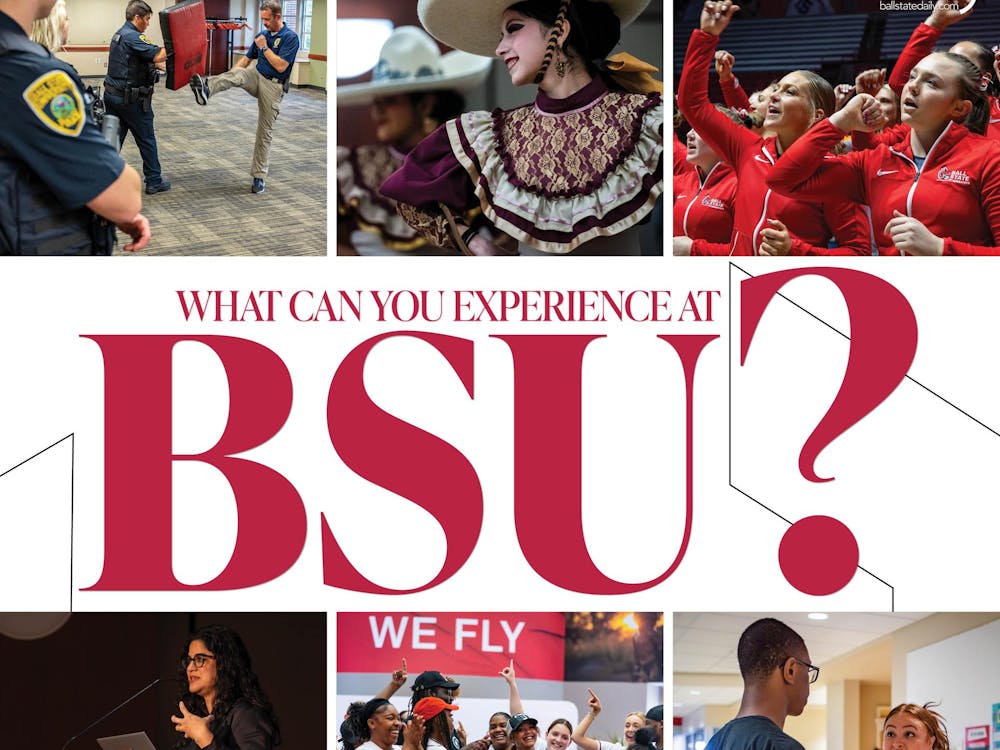Angelica Gonzalez Morales is a fourth-year journalism major and writes “One-Time Wonder” for the Daily News. Her views do not necessarily reflect those of the newspaper.
I walk in, take a seat and then start counting in my head. I glance around the room, asking myself, “Do I see anyone like me?”
As I look around, I quickly realize that I am the only Hispanic person in the room. There is no one else that can understand me or support me. I’m in this alone.
This logic would become the same process with every class I took at Ball State. Quickly, I noticed how I was going to be one of the few students representing the Hispanic/Latinx community when going to college. It was more worthwhile to note that there are only a handful of Hispanic students that have the privilege to be the first in our families to start focusing on our careers.
Growing up, I struggled with my identity. My family told me that I am Mexican-American, but with being Mexican-American, I learned to live two lifestyles.
At home with my family, I ate Hispanic dishes, listened to Mexican music, shopped at Hispanic grocery stores and was always around my culture. Then, when I went to school, I quickly had to learn American culture – listening to different music, eating foods I wasn’t used to and trying to understand the English language.
It was very difficult to try to adjust to two different lifestyles. Yet, there was one phrase that always stuck with me and showed how it feels with being Mexican-American. The memorable phrase came from the movie “Selena,” specifically when Selena’s father, Abraham Quintanilla, would try to aid his kids in understanding the difficulty of being Mexican-American.
“We have to be more Mexican than the Mexicans and more American than Americans both at the same time,” Quintanilla said.
Going to school, everyone was always questioning my ethnicity. It didn’t matter what I told them, people assumed that I was too light to be Mexican but was too (insert word) tone to be American. People couldn’t understand why I had freckles and red hair if I was Mexican.
With all their might, people will try to correct me by telling me that I was wrong to have light skin, red hair and freckles. People will tell me that I couldn’t possibly be Mexican even though I told them I was Mexican-American.
I had everyone telling me how surprised or shocked they were to know my true identity, yet they didn’t get to know me beyond my genetic features.
It was always happening, with meeting new people, attending a new school or going into a new class. No matter what I did, people will take a long look and try to figure out what I was instead of who I am when my presence entered their vicinity .
I felt like I was always fighting to prove to others that I am a “true” Mexican-American, but the only thing they concerned themselves with was if I could say something in Spanish.
This is a matter that I have endured since preschool. I didn’t understand how speaking Spanish would verify my ethnicity and instantly prove that I was telling the truth. . I just couldn’t understand why no one would believe me when I shared my ethnicity. I always tried to figure out why.
It got to a point where I started to question myself. I felt ashamed to be Mexican-American and developed a need to hide myself. I start to get frustrated with my appearance because I didn’t have dark black or brown hair, and I didn’t have dark brown skin like my other family members. I just didn’t understand how I had to be different and fight to prove who I am to others.
It was a tiring battle, a battle that I’ve been doing for 22 years and will continue to do so for the rest of my life.
It felt like a burden to be different from everyone else and be the only one in the classroom. I tried to blend in and not stand out. It became a security blanket for me not to have those questions asked all over again. I was hesitant to make new friends in my first couple years of college because I didn’t want to fight to prove myself.
Throughout my education, I was treated as if I was a burden on the class for being Mexican-American. I was told since I was Mexican, I didn’t need to be taking Spanish classes. I didn’t need to sit through those classes since I was “advanced” in Spanish, and I needed to give the other students a chance to learn Spanish. Along with other Hispanic/Latinx students, I had to sit in a different classroom and work on school work.
So going into college, I felt that burden of being comfortable with my ethnicity. Then, I started to meet other students of color, and they shared with me how it’s difficult to live different lifestyles when having a diverse background. After having those conversations with other students, that moment is when I felt seen; I felt like I didn’t have to hide myself.
Now, I can say I take tremendous pride in being Mexican-American. I take pride in showing people that even though I don’t look like what society perceives as an average Hispanic, that doesn’t make me any less Mexican or less American. I take pride in being a first-generation Mexican-American. My parents gave up a lot in their life to give me a lifestyle in America, and I am not afraid to show people my heritage.
About to start a new chapter in my life, I am ready for those battles of people that want to question me. I’m ready to show people that this is who I am, and I love being Mexican-American. I wouldn’t trade it for anything.
Contact Angelica Gonzalez Morales with comments at agonzalezmor@bsu.edu or on Twitter @angelicag_1107.





